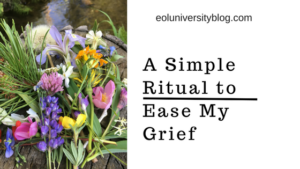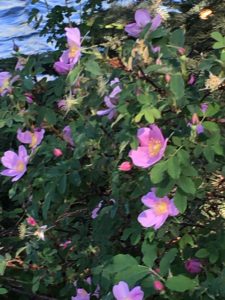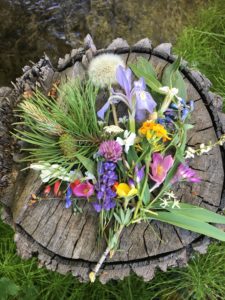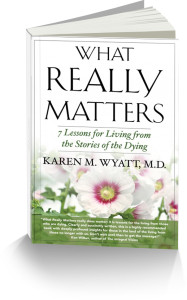The Aramaic word for grief can also mean “to wander.” When I was left wandering and bewildered after the death of my niece a small ritual helped me find my way again.

A few months ago my niece died of breast cancer at the young age of 47. I was somewhat prepared for her death because of her 14-year journey with cancer and the inevitable decline she had been experiencing for several months. Yet in reality death always arrives like a lightning bolt that pierces to the core.
There is no way to prepare for death’s appearance or to be unmoved by the jolt: your loved one is next to you in one moment and then gone after a single breath. You don’t know you are at the end until the end has already passed.
So the news of Tracey’s death hit me hard with a mixture of emotions—disbelief that she could really be dead at such a young age, pain for her son and her parents as they coped with this loss, guilt that I hadn’t done more to help, and a trace of relief that finally there was no more uncertainty and no more agonizing over what suffering the next hour or the next day would bring to her. Her journey here was finished.
As life would have it, with its curious synchronicities and juxtapositions, I was scheduled to do an interview with two women who had written a guidebook to end-of-life rituals just a few hours after news of Tracey’s death reached me. I didn’t even consider postponing our conversation because I knew that this timing, though difficult, was perfect.
My guests, Donna Belk and Kateyanne Unillisi, talked about the importance of rituals for making sense of life’s tragedies and painful events and they shared their suggestions for creating our own simple rituals. I understood deeply the importance of this subject and that I needed to somehow find a way to mark this day with some special ceremony, though I had no idea where to begin.
The next morning I took a long walk on a path next to the Blue River and thought about Tracey. I was filled with regrets – Why hadn’t I visited her one last time? Why hadn’t I called her for that talk about forgiveness that I knew she wanted to have? Why hadn’t I been there more for my brother?
As I walked more and more slowly, weighed down with all of the guilt I was heaping on myself I suddenly heard laughter—and it was unmistakably Tracey’s laugh. I felt as if she were standing right next to me and I heard her say “I understand everything now! It’s all okay.”
 In that moment I was surrounded by joy, peace and love. I looked down and saw beautiful flowers I hadn’t noticed before at the side of the path: fragrant wild roses in bright pink, Tracey’s favorite color. I instantly knew what to do next and asked Tracey to join me.
In that moment I was surrounded by joy, peace and love. I looked down and saw beautiful flowers I hadn’t noticed before at the side of the path: fragrant wild roses in bright pink, Tracey’s favorite color. I instantly knew what to do next and asked Tracey to join me.
I began to gather wildflowers from the banks of the river and was surprised by the variety I found growing there when I really stopped to look: mountain lupine, bluebells, yellow daisies, poppies, chicory, cinquefoil, wild geranium, blue flax, columbine and more.
By the time I reached a small stream that flowed gently into the rushing river I had a handful of blossoms of many colors. I spread them out on a tree stump to create a mandala of sorts—an array of beauty and a reminder that life changes constantly but ultimately continues on.

I said a prayer for Tracey and for all of our broken hearts that were missing her so dearly on that day. Then I dropped each blossom—one at a time—into the stream and watched it drift gently away. With each flower that tumbled into the stream I felt a lessening of the burden of grief and a gradual influx of peace. And all the while I heard the faintest hint of laughter floating on the breeze.

